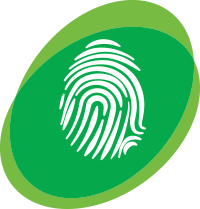Contextual bias has been widely discussed as a possible problem in forensic science. The trial simulation experiment reported here examined reactions of jurors at a county courthouse to cross‐examination and arguments about contextual bias in a hypothetical case. We varied whether the key prosecution witness (a forensic odontologist) was cross‐examined about the subjectivity of his interpretations and about his exposure to potentially biasing task‐irrelevant information. Jurors found the expert less credible and were less likely to convict when the expert admitted that his interpretation rested on subjective judgment, and when he admitted having been exposed to potentially biasing task‐irrelevant contextual information (relative to when these issues were not raised by the lawyers). The findings suggest, however, that forensic scientists can immunize themselves against such challenges and maximize the weight jurors give their evidence by adopting context management procedures that blind them to task‐irrelevant information.
How Cross-Examination on Subjectivity and Bias Affects Jurors’ Evaluations of Forensic Science Evidence

Journal: Journal of Forensic Sciences
Published: 2019
Primary Author: William C. Thompson
Secondary Authors: Nicholas Scurich
Type: Publication
Research Area: Implementation and Practice
Related Resources
What’s in a Name? Consistency in Latent Print Examiners’ Naming Conventions and Perceptions of Minutiae Frequency
Fingerprint minutia types influence LPEs’ decision-making processes during analysis and evaluation, with features perceived to be rarer generally given more weight. However, no large-scale studies comparing examiner perceptions of minutiae…
Shifting decision thresholds can undermine the probative value and legal utility of forensic pattern-matching evidence
Forensic pattern analysis requires examiners to compare the patterns of items such as fingerprints or tool marks to assess whether they have a common source. This article uses signal detection…
The Contribution of Forensic and Expert Evidence to DNA Exoneration Cases: An Interim Report
This report is from Simon A. Cole, Vanessa Meterko, Sarah Chu, Glinda Cooper, Jessica Weinstock Paredes, Maurice Possley, and Ken Otterbourg (2022), The Contribution of Forensic and Expert Evidence to…
CSAFE Project Update & ASCLD FRC Collaboration
This presentation highlighted CSAFE’s collaboration with the ASCLD FRC Collaboration Hub.


